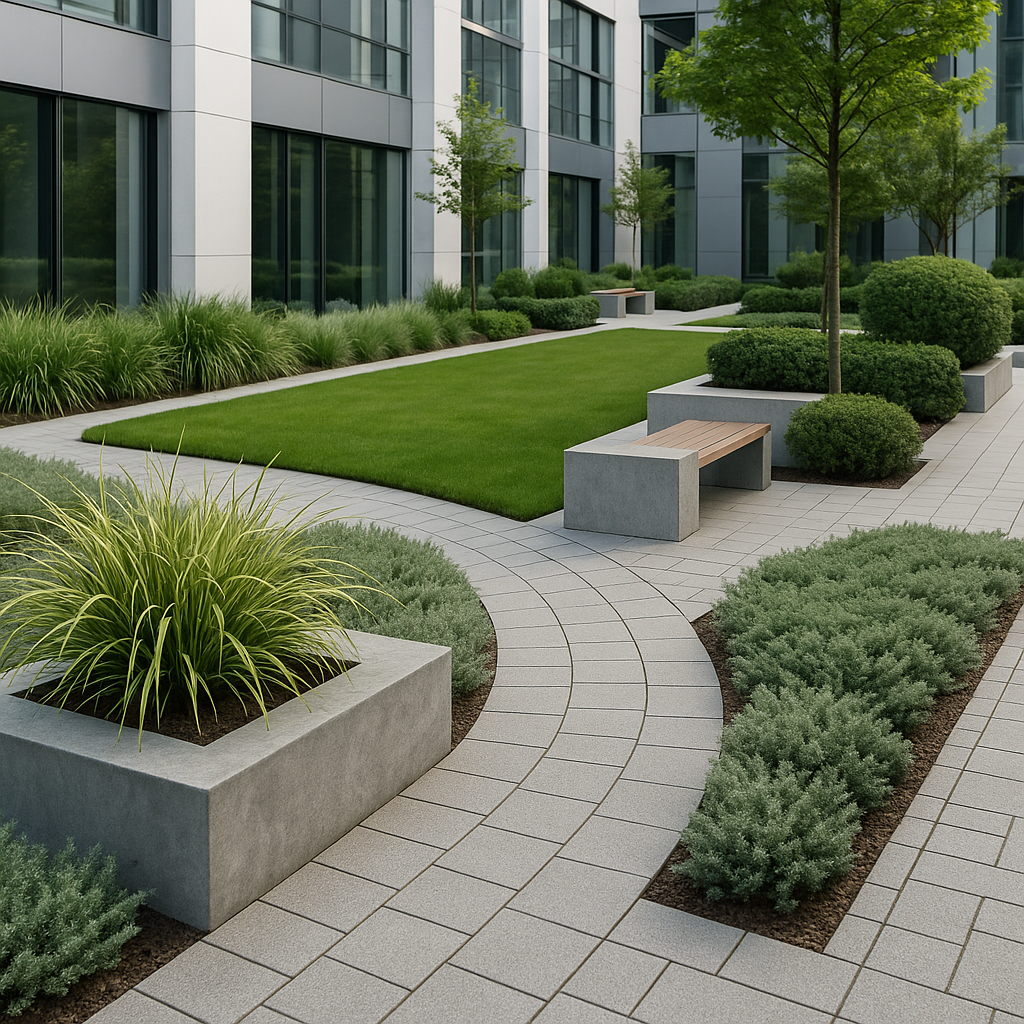In today’s architectural and urban planning world, the union of form and function is essential. Nowhere is this more evident than in the creation of a beautiful landscape that serves practical purposes while embodying sleek, modern aesthetics. Whether in commercial complexes, civic areas, residential neighborhoods, or transit-oriented developments, the seamless integration of landscape and structure enhances usability, well-being, and long-term property value.
This article explores how landscape design architecture merges form and function in modern settings.
Why Modern Design Needs a Beautiful Landscape
Creating Purpose-Driven Outdoor Spaces
A modern landscape goes beyond visual appeal. It provides defined zones for relaxation, recreation, gathering, movement, and ecological support. These spaces enhance the functionality of properties and support diverse human activity.
Enhancing Architectural Harmony
A beautiful landscape complements contemporary buildings by mirroring clean lines, using minimalist plant palettes, and incorporating geometric hardscapes. Design cohesion creates a seamless transition from built form to nature.
Supporting Lifestyle and Wellness
Modern outdoor environments offer shade, greenery, walking paths, and seating areas that support mental and physical health, encouraging people to spend time outdoors.
Core Elements of Functional Modern Landscapes
Site-Specific Landscape Drawing
A detailed landscape drawing outlines functional circulation patterns, drainage infrastructure, planting zones, and the strategic placement of features like benches, lighting, and shade structures.
Geometric Layouts and Simplicity
Contemporary landscape design emphasizes strong lines, symmetry, and repetition. Raised planters, rectangular lawns, and linear water features align with architectural edges.
Smart Materials and Finishes
Modern hardscapes often feature:
- Concrete pavers
- Corten steel edging
- Polished stone
- Wood-composite decking
These durable, low-maintenance materials support both aesthetics and usability.
Integrated Technology
Smart lighting, irrigation systems, and embedded sensors support sustainable usage and reduce operational costs. Wi-Fi-enabled parks and public plazas reflect modern expectations.
Sustainability in Modern Landscape Design
Native and Adaptive Planting
Minimalist planting plans using native species reduce maintenance needs, conserve water, and boost local biodiversity—a core element of beautiful landscape sustainability.
Stormwater Management Features
Rain gardens, bioswales, and permeable paving manage runoff without compromising modern design. Explore these innovations in Beautiful Landscape in Green Infrastructure Projects.
Solar and Renewable Integration
Solar lighting, green roofs, and energy-harvesting paving surfaces align with sustainable goals in landscape projects.
Application in Urban and Civic Spaces
Public Courtyards and Plazas
Open plazas are reimagined as people-centered green spaces, offering shade, art, water elements, and seating with clean-lined designs.
Transit-Oriented Landscapes
Modern transit areas benefit from lush but low-maintenance greenery, intuitive wayfinding, and open sightlines. For ideas, see Beautiful Landscape Enhancements for Transit Projects.
Corporate Campuses and Mixed-Use Developments
Multi-functional outdoor spaces support events, breaks, and casual meetings. Landscapes balance hardscape and greenery to promote collaboration and movement.
Benefits of a Modern Beautiful Landscape
Increases Property Value
Functional and attractive outdoor environments increase desirability and real estate value. See more in Why a Beautiful Landscape Boosts Property Value.
Attracts Talent and Visitors
Businesses, tenants, and residents are drawn to places that reflect modern values of sustainability, wellness, and innovation—all expressed through landscape design.
Reduces Long-Term Costs
Efficient irrigation, drought-tolerant plants, and quality materials reduce maintenance costs and increase lifecycle value.
Working with a Professional Landscape Contractor
Design Implementation Expertise
A skilled landscape contractor ensures that vision meets reality. They select materials, coordinate with architects, and manage installations with precision.
Maintenance Strategy Development
Contractors provide maintenance schedules and long-term care plans to keep landscapes thriving and aligned with design intent.
Regulatory Compliance
Experienced professionals ensure adherence to zoning laws, accessibility standards, and environmental regulations.
Final Thoughts
A beautiful landscape rooted in modern design doesn’t just look good—it works. From walkability to stormwater control, these spaces embody functionality, sustainability, and elegance. Through smart landscape design architecture, professional execution by landscape contractors, and an emphasis on sustainable practices, today’s landscapes can be both iconic and incredibly practical.
By investing in modern landscape strategies, cities, developers, and property owners create environments that inspire, perform, and endure—where function truly meets form.

